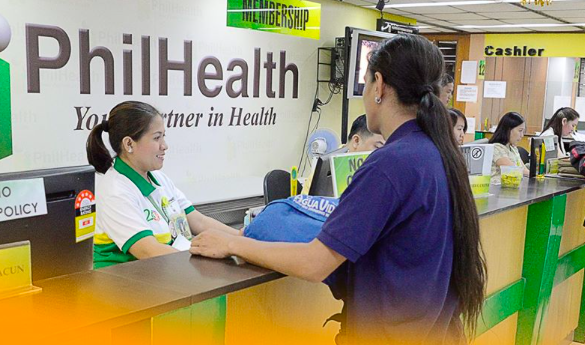Only 87% of PH population registered with PhilHealth; nearly 50M being subsidized by gov’t
Image from PhilHealth Facebook.
MANILA, Philippines — Only 87 percent of the country’s population are registered with the Philippine Health Insurance Corporation (PhilHealth) as of now, Health Secretary Francisco Duque III admitted on Tuesday.
Duque, who was online during the House of Representatives committee on health hearings on the implementation of Republic Act No. 11223 or the Universal Health Care Act, gave this answer after being asked by the committee chairperson and Quezon 4th District Rep. Angelina Tan.
ADVERTISEMENT
While this is a high number, estimated to be around 95 million of the 109 million population according to the latest Philippine Statistics Authority (PSA) numbers, this falls short of the targets set under Universal Health Care Act — which requires coverage for the entire population.
“The short answer there is about 87 to 88 percent. So the balance there is the one that’s remained uncovered,” Duque told Tan.
Rival political groups unite behind Robredo
Robredo podcasts to reach, interact with younger audiences
Lacson resigns as vice chair of Senate finance panel
Seeking further clarification, Marikina Rep. Stella Quimbo asked how many of the registered individuals are actually subsidized by the government — meaning that they are not required to contribute their monthly premiums.
She also clarified and eventually confirmed that the 87 percent that Duque was referring to is only showing the individuals registered with PhilHealth.
“So no’ng tinanong ni Madam chair kung ilan ang subsidized at sumagot si Secretary Duque na 87 percent, what he was actually referring to is the number of registered. So ang follow-up question is ilan ang subsidized?” Quimbo asked.
(So when Madam chair asked how many were subsidized and Secretary Duque said 87 percent, what he was actually referring to is the number of registered members. So the follow-up question is, how many are subsidized?)
PhilHealth’s Acting Vice President Lemuel Untalan answered that around 22 million Filipino members are subsidized, which translates to around 50 million citizens if the members’ dependents are included.
“Right now po ‘yong proposal namin sa P71 billion fund for this year is about 22 million Filipinos po ‘yon, members. So ‘yon po ‘yong subsidized sa population […] Roughly po aabot po ng mga 50 plus (million) po,” Untalan said.
(Right now based on our proposal of a P71 billion fund for this year, this would cover about 22 million Filipinos, members. So that’s the number of subsidized members of the population, roughly it would reach around 50 plus million.)
ADVERTISEMENT
“Right now po ‘yong current sa database namin na sinisingil sa DBM, ‘yon po ay ‘yong lahat ng ng listado, ibig sabihin po listado merong PhilHealth identification number,” he added.
(Right now the current database shows that we are getting funding from DBM for all those who are listed, by listed meaning those with PhilHealth identification.)
While the Universal Health Care Act was signed into law last July 2018, the major problem that the law has encountered is implementation, as PhilHealth and the Department of Health have yet to fully implement the provisions stated.
During PhilHealth’s explanation before the House panel, the state insurer is still looking at 2024 to implement key reforms stated under the Universal Health Care Act.
But aside from implementation, Untalan also admitted that they are having problems with the data, as they are revisiting how they were able to generate such numbers given that there are entries that appear inaccurate due to invalid characters in names and dates of birth.
“Right now po we are revisiting how we extracted or generated the numbers kasi po (because) as we know do’n sa population coverage po sa Section 5 ng Universal Healthcare, all Filipino citizens should be registered. And we are currently revisiting our database on how we generated that number,” he said.
“And then ‘yong last may third pong initiative ang ginagawa namin, may mga certain data inaccuracies since the start of the program po kaming nakikita, and we are starting to look on it and to find out bakit po may mga special characters, invalid date of birth pong nakalagay sa database natin,” he added.
(And then for the last initiative that we are doing, we saw certain data inaccuracies since the start of the program, and we are starting to look at it and to find out why names contain special characters, and why there are invalid dates of birth on our database.)
EDV
Subscribe to our daily newsletter
Read Next
New York City mandates COVID-19 vaccine for teachers in largest US school district
EDITORS’ PICK
MOST READ
Don’t miss out on the latest news and information.
View comments



